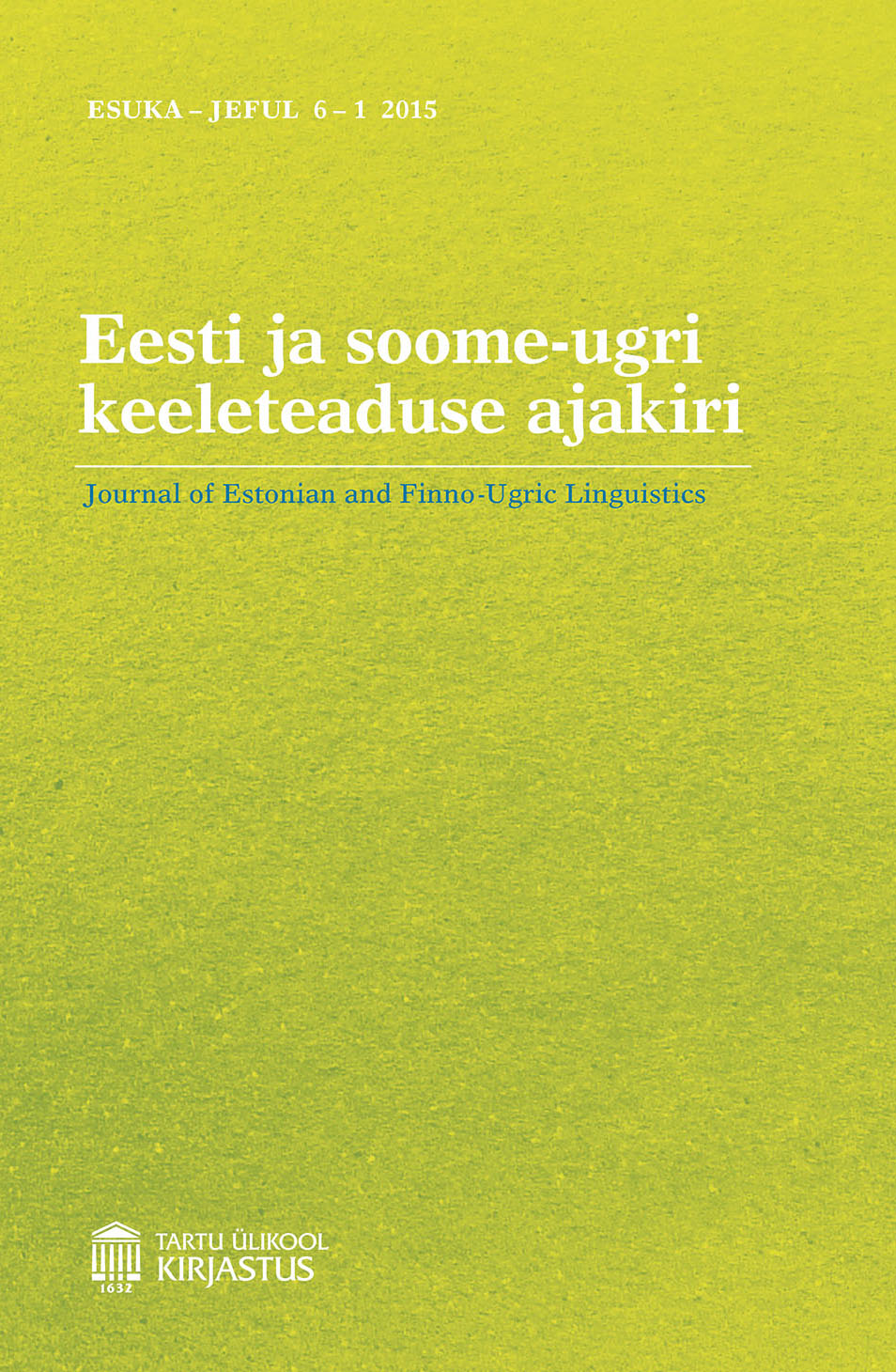Sound symbolism of expressive verbs in Finnic languages (Estonian, Finnish, Ingrian, Votic)
DOI:
https://doi.org/10.12697/jeful.2015.6.1.04Keywords:
Finnic languages, expressiveness, sound symbolism, verb derivationAbstract
This article will study language, using the contrastive-descriptive method, as a phonetic imitation of the world around us, and will concentrate on the verb vocabulary, based on sound imitation and natural sound imitation, characteristic of the Finnic languages spoken in the region of the Gulf of Finland, i.e. Estonian, Finnish, Ingrian and Votic, with a special focus on verbs expressing sounds produced by inanimate sound generators/sources. The investigation clarifies the differences between expressive verbs and general vocabulary in terms of phonetic composition, and describes derivation patterns of expressive verbs. In comparisons of the four related languages, the theory of sound symbolism has not been confirmed. It is almost impossible to find identical expressive lexemes (stems) carrying the same (collocative) meaning in all four closely related languages.Downloads
Download data is not yet available.
Downloads
Published
2015-06-09
How to Cite
Heinsoo, H., & Saar, E. (2015). Sound symbolism of expressive verbs in Finnic languages (Estonian, Finnish, Ingrian, Votic). Eesti Ja Soome-Ugri Keeleteaduse Ajakiri. Journal of Estonian and Finno-Ugric Linguistics, 6(1), 55–74. https://doi.org/10.12697/jeful.2015.6.1.04


